10 KPIs for recruiters you must track in 2024
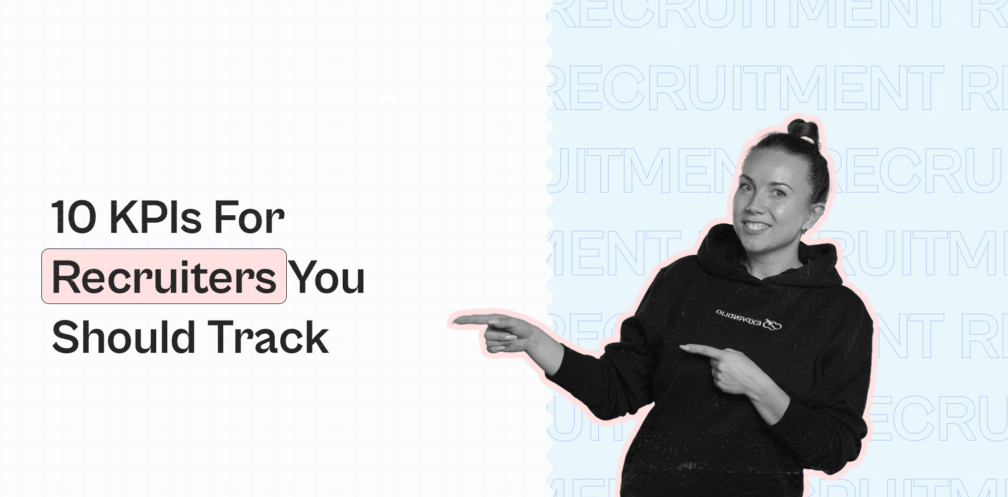
Want to gauge the effectiveness of your recruiting campaigns but not sure how?
We get it.
Updating job postings to interviewing qualified candidates is a long and strenuous process. On top of this, hard deadlines make recruiting outreach more stressful.
What if we tell you there are ways to track your recruitment efforts and save time, money, and sweat? Meet key performance indicators (KPIs) for recruiters.
This article will introduce you to 10 ultimate KPIs for recruiters so you can make data-led decisions and optimize your current recruiting processes.

Importance of key performance indicators (KPIs) for recruiters
Recruitment KPIs are used to measure recruitment strategy and talent acquisition efficacy. They offer tangible results through which you can understand the ROI of your overall efforts and if they align with your business goals.
Apart from these, below are the various benefits of measuring recruitment KPIs:
-
Improve in hiring quality
KPIs can help evaluate the quality of hires, i.e., if the right people and skills fit into your company culture and can contribute to the company’s bottom line.
Tracking employee retention rates, running candidate satisfaction surveys, and evaluating performances can help improve hiring quality.
-
Make fact-based data-driven decisions
Recruitment KPIs uncover loopholes and gaps in your recruitment process. For example, if a particular recruitment platform like LinkedIn or Indeed is effective enough to reach and find suitable candidates.
These KPIs can also offer insights into what channels or messaging strategies have a history of high candidate acceptance rates.
-
Reduce cost-per-hire
Tracking KPIs like cost-per-hire and time-to-fill roles lets you understand the average cost you spend per hire. For example, costs related to job advertising, automation tools, ATS licenses, and others.
Similarly, the time-to-fill role is another key recruitment metric that tracks the time taken to fill each open position and can indicate gaps or potential slowness in filling a role.
Together, both these metrics let you examine recruitment costs and time so you can allocate resources more efficiently.
-
Boost candidate experience
KPIs are not just about meeting goals for recruiters or cutting costs. It’s also about offering the best experience to potential candidates so you can pique their interest in your company.
For example, the “candidate satisfaction” KPI lets you understand the candidate’s perspective interacting with you and how likely they are to turn into advocates.
Without further ado, let’s break down each recruiter KPI.
KPI #1: Time-to-Fill (TTF)
Time-to-Fill (TTF) is the total duration it takes from contacting a suitable candidate for a vacant position to accepting the job offer.
The formula to calculate TTF is simple:
TTF = Total number of days elapsed between the vacant position’s approved date to the date it was filled, i.e, Position filled date – position approved date
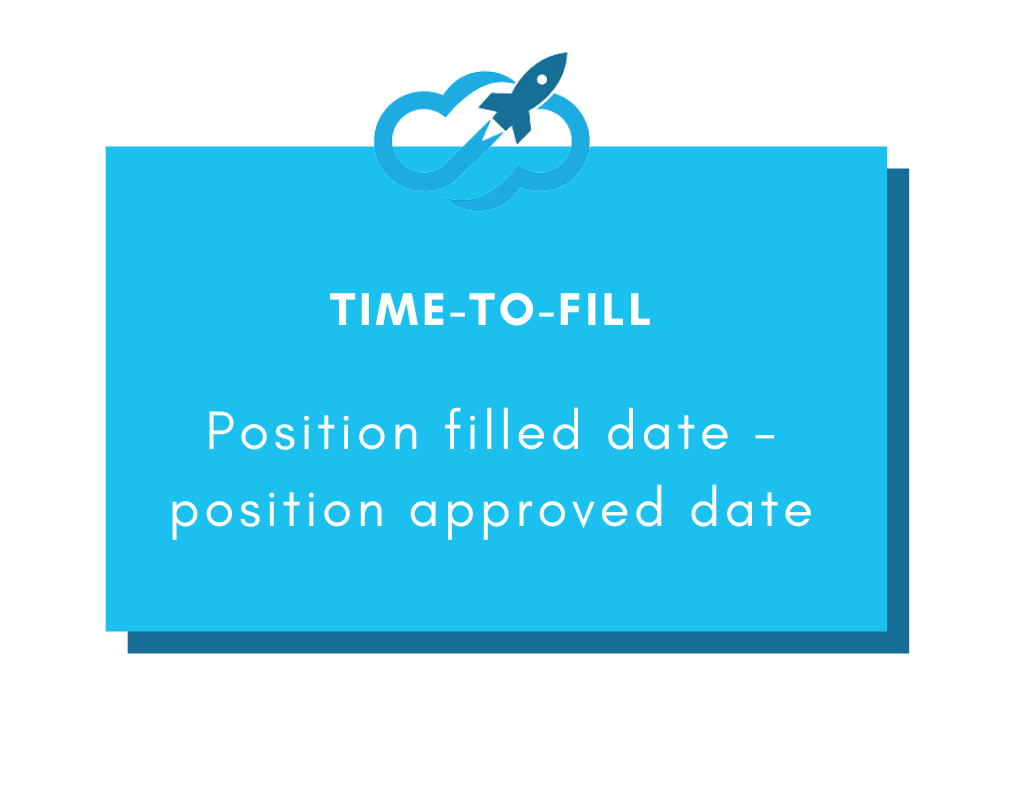
A high TTF rate may indicate roadblocks in your recruitment approach.
For example, inefficient outreach processes, using an outdated messaging sequence, scraping unfit candidates, etc.
So what’s the fix?
Real-time strategies to optimize and reduce your TTF:
-
Invest in a good Applicant Tracking System (ATS)
An ATS can guide you throughout your recruitment process, be it notifying new job applications, posting job ads, or scheduling interviews. It can bring down the manual effort and thus reduce the TTF.
-
Identify the most effective sourcing channels
LinkedIn, Indeed, and Google for Jobs – this list of popular job boards to source candidates is endless. However, you must try to identify your go-to platform based on your industry and target candidates.
For example, it’s faster to get a response from a potential Social Media Manager on Instagram rather than LinkedIn. Similarly, a Marketing Manager would be more active on LinkedIn than on emails or social media.
-
Polish job descriptions
A polished job description offers applicants clarity and helps them self-assess if their skills and experiences are the right fit for your company’s requirements. Doing so tremendously brings down your TTF as only suitable candidates apply for a position.
-
Outreach passive candidates on LinkedIn using an automation tool
A passive candidate on LinkedIn is someone who’s not actively looking for a job but could be interested if approached with a great offer.
Reaching out to such passive candidates on LinkedIn may fast-track recruitment as you access high-quality, hidden talent minus the competition that comes with job ads.
Using a LinkedIn automation tool like Expandi, you can scrape passive candidates and reach out to them using an automated hyper-personalized messaging sequence, thereby cutting your TTF by half or more.
Learn more here on boosting candidate response rate on LinkedIn by 74%!
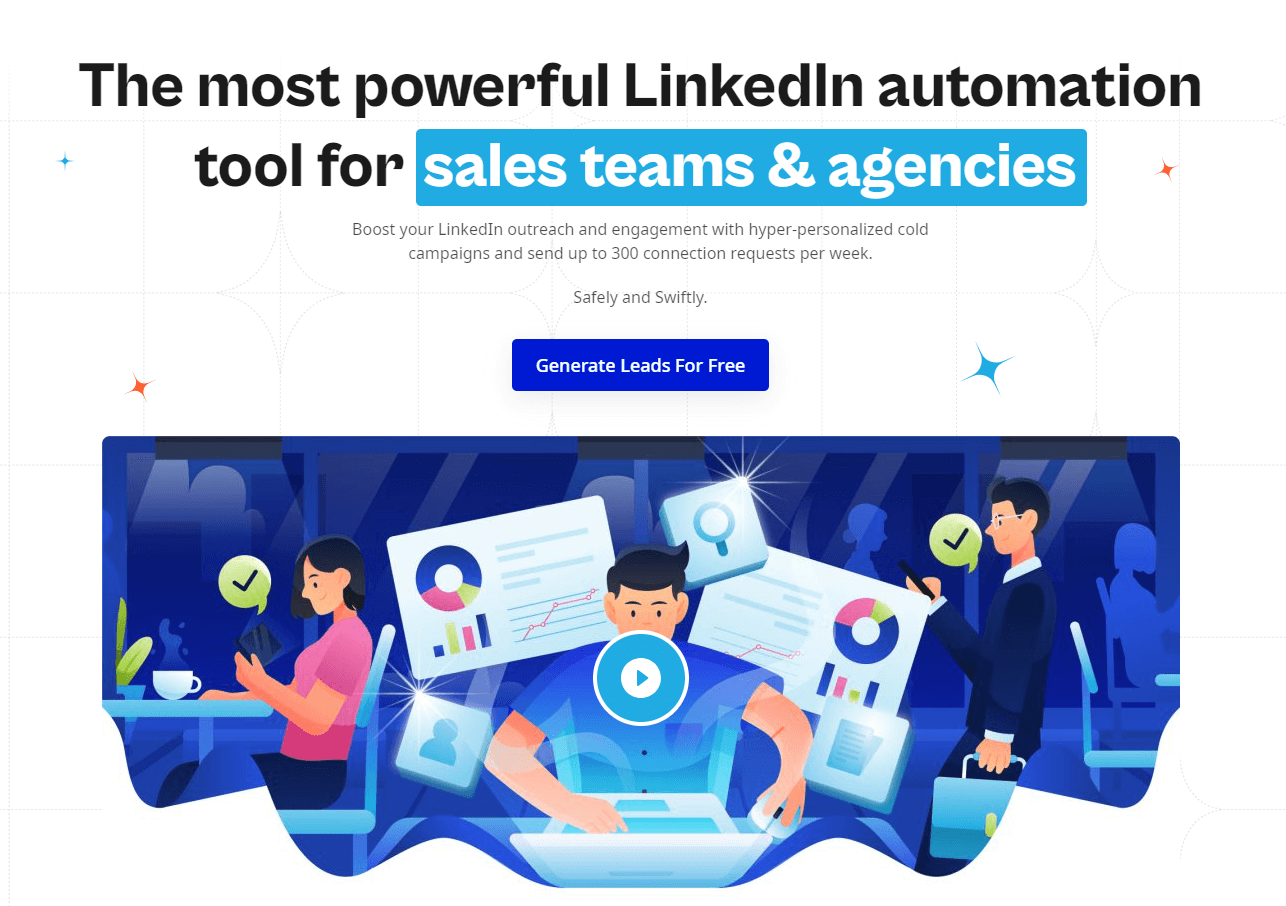
KPI #2: Cost-per-Hire (CPH)
Cost-per-hire (CPH) is another key recruitment metric that measures every expense of recruiting a new candidate.
For example, ATS, training and onboarding, automation tools, advertising, and more costs.
CPH can be calculated by simply adding up all recruitment expenses over a period of time and dividing it by the total number of candidates you’ve recruited in that period.
Here’s the formula to calculate CPH:
CPH = Internal and external recruitment costs over a period / Total number of successful hires in that period

Noticing a higher than usual CPH? We’re here to help.
3 ways to minimize recruitment costs without compromising quality
-
Use social media to attract suitable candidates
Social media platforms, including LinkedIn, are a melting pot of talented candidates eager for exciting opportunities. So target them using personalized connection messages, create and promote job posts, and update your company social media profile so candidates can find you.
-
Adopt automation
Recruiters often fear automation as it may lead to impersonal outreach efforts. But the truth is that LinkedIn automation tools like Expandi make automated outreach as personal and safe as possible for recruiters with its hyper-personalized campaigns.
-
Encourage employee referrals
Employee referrals can significantly reduce hiring costs as your current employees are most likely to refer to talented people like themselves and cut your total outreach time.
KPI #3: Quality of Hire (QoH)
Calculating hiring quality could include various aspects, such as employee productivity, employee served period, and whether their managers are happy with their performance or not.
Remember, there’s no straightforward approach to calculate the QoH; however, if you notice you’re filling positions quickly but the new hires don’t last for long – it could be a wake-up call to improve your overall QoH.
Strategies to improve the overall quality of hires:
-
Offer realistic job previews
Create accurate job postings and detailed job descriptions so applying candidates know what to expect and, at the same time, you find your solid fit.
You could also go the extra mile and offer them a sneak peek into the company culture, clear doubts about their salaries, and explain what day-to-day work is like to weed out low-quality candidates.
-
Collect and analyze data
Collect pre-hire and post-hire data, such as pre-employment assessment data and candidate performance reviews by managers. This way, you can make data-driven decisions for your upcoming recruitment cycles.
-
Make the recruitment process more objective
Traditional recruitment methods rely on subjective approaches, such as unstructured interviews and biased hiring.
So to make recruitment more objective, hire quality folks, run skill assessments, and involve hiring managers to pre-screen candidates and implement collaborative hiring.
KPI #4: Candidate Satisfaction
How satisfied are your candidates with your end-to-end recruitment process compared to others they’ve applied to?
You can analyze this using a simple candidate satisfaction survey.
But why is this necessary? Analyzing candidate satisfaction lets you improve your recruitment efforts by understanding the candidate’s perspective.
You could send out a short questionnaire survey or ask your recruited candidates to rate their satisfaction levels on a scale of 1 to 10.

KPI #5: Source of Hire
The Source of Hire is a measure of the quality of talent sources you use to fetch the right candidates for every open position. Calculating the effectiveness of each source is key to building a reliable talent pool and ensuring you spend your bucks on a high ROI source.
The formula to calculate the quality of the Source of Hire is:
Source of Hire quality = Total number of hires from a particular source / Total number of hires across platforms
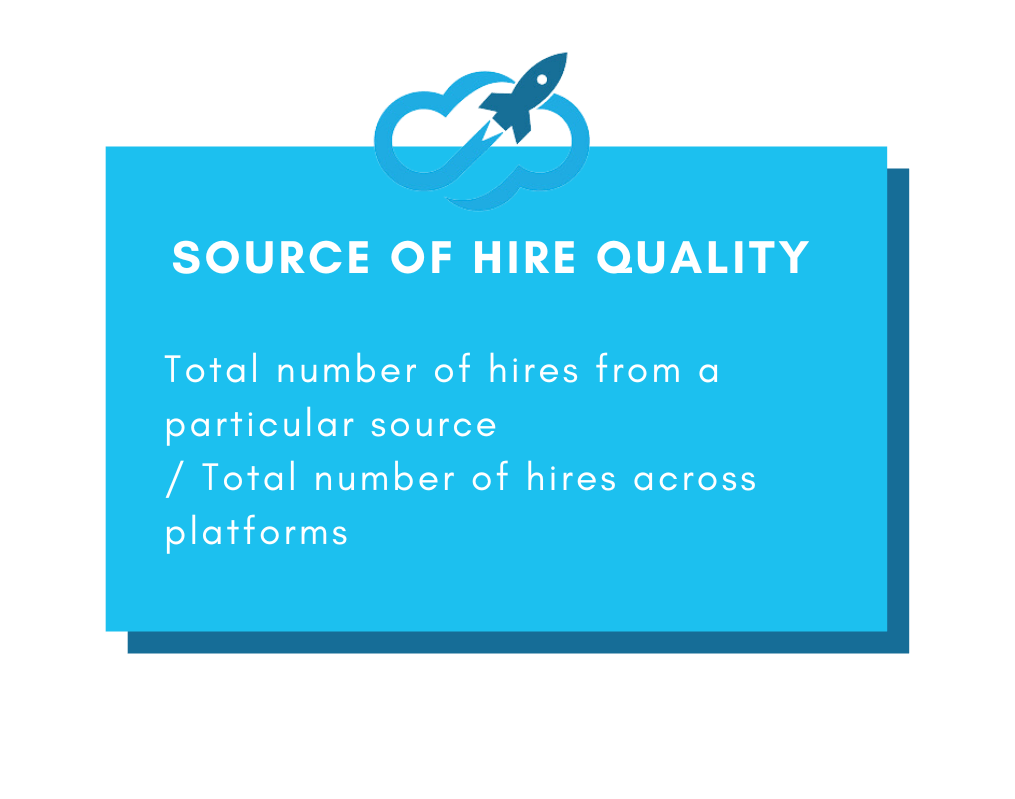
But how do you identify the right source you must pursue? Let’s discuss.
Tracking the effectiveness of different recruitment channels
Here are some additional metrics that can help you gauge the effectiveness of every recruitment channel:
- Total impressions: How frequently has the job ad appeared across search results?
- Views and clicks: How many potential candidates have viewed your job post and ad and clicked on the link to apply for the position or upload their resume?
- Total conversions: How many candidates you’ve reached out to on the platform have applied for the role or agreed to a scheduled interview?
Finally, the best way to track channel effectiveness is to measure the total number of successful hires sourced through the channel, say, LinkedIn, Indeed, Google for Jobs, or others.
KPI #6: Diversity and Inclusion Metrics
Diversity is the many traits and characteristics individuals showcase, and inclusion is a company’s behavior towards its employees that makes them feel welcomed.
Over the last couple of years, diverse and inclusive (D&I) organizations have been major deciding factors for potential candidates applying. Therefore, more and more companies view this as a critical metric and are spending heavily on D&I initiatives.
While there’s no quantifiable way to measure D&I, below are some related parameters you can measure to see where your organization stands on diversity and inclusivity:
- Your recruits are spread across diverse characteristics of age, gender, race, sexual orientation, and religion.
- You are unbiased to the candidate’s education, marital status, parental status, and previous work experiences.
- You don’t differentiate between candidates’ job levels, years of experience, or work shifts.
- You don’t differentiate based on their work habits or communication style.
Embracing D&I lets employees spread the word about your organization’s positive work culture, and thereby, more and more potential candidates – including leadership – may actively sign up for vacant roles.
KPI #7: Offer Acceptance Rate (OAR)
A recent study showed poor interview experience and mismatch in compensation benefits as the top reasons behind candidates not accepting job offers.
So are these preventable? Absolutely.
Identify using a simple survey or a direct message to candidates why they did not accept the job offer.
If the problem is poor interview experience, try building a personalized outreach and interview process from scratch. For example, build a more personalized, approachable messaging sequence, schedule interviews based on candidates’ preferences, and build rapport slowly – especially for higher positions.
Similarly, for compensation-related barriers, speak to your finance team to see if you could work on a better retention strategy to attract talented candidates with the right numbers.
Below is the formula to measure OAR:
OAR = (Total number of offers accepted / Number or offers extended) x 100
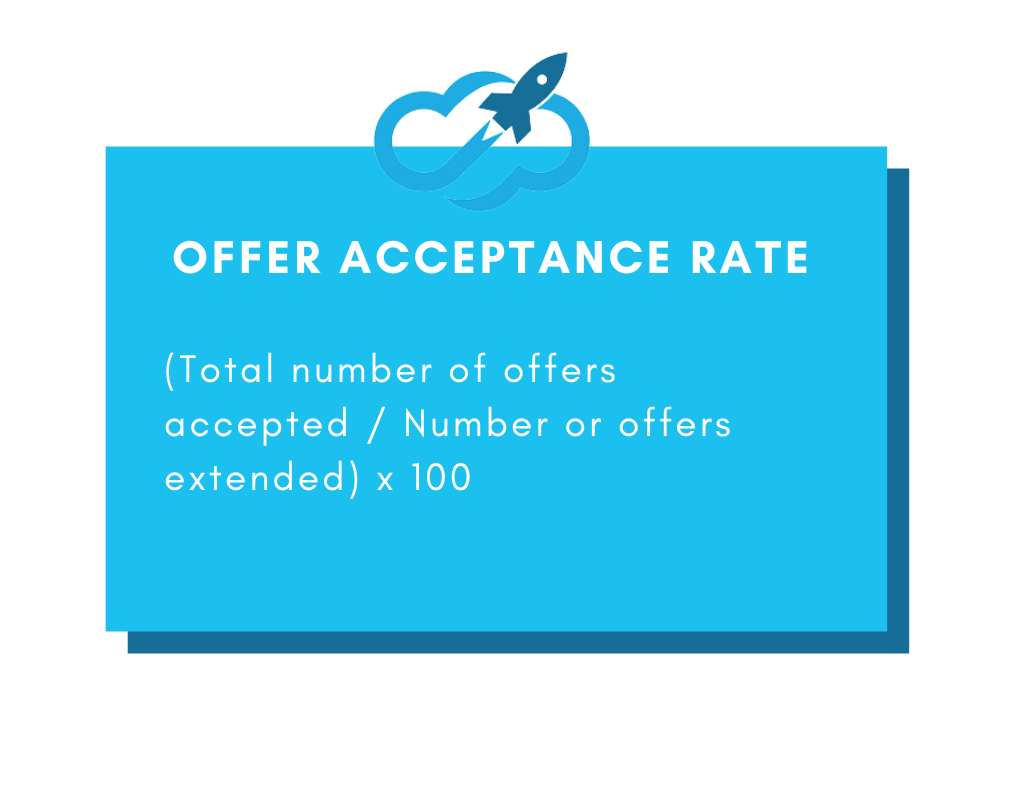
KPI #8: Retention Rate
The retention rate is based on the number of employees who’ve decided to stay with your company over a period of time.
But what makes retention rate a critical recruitment KPI?
Measuring retention rate tells you if the hires you’re making are worth the investment or not – implying if they stick around for the long term or not.
A low retention rate calls for re-examining your company’s strategy of onboarding candidates as well as engaging, satisfying, and training high-quality employees.
Here’s the formula to measure the employee retention rate:
Retention rate = ((Number of employees at the end of a period – Number of employees who quit in the period) / Total employees at the start of the period) x 100
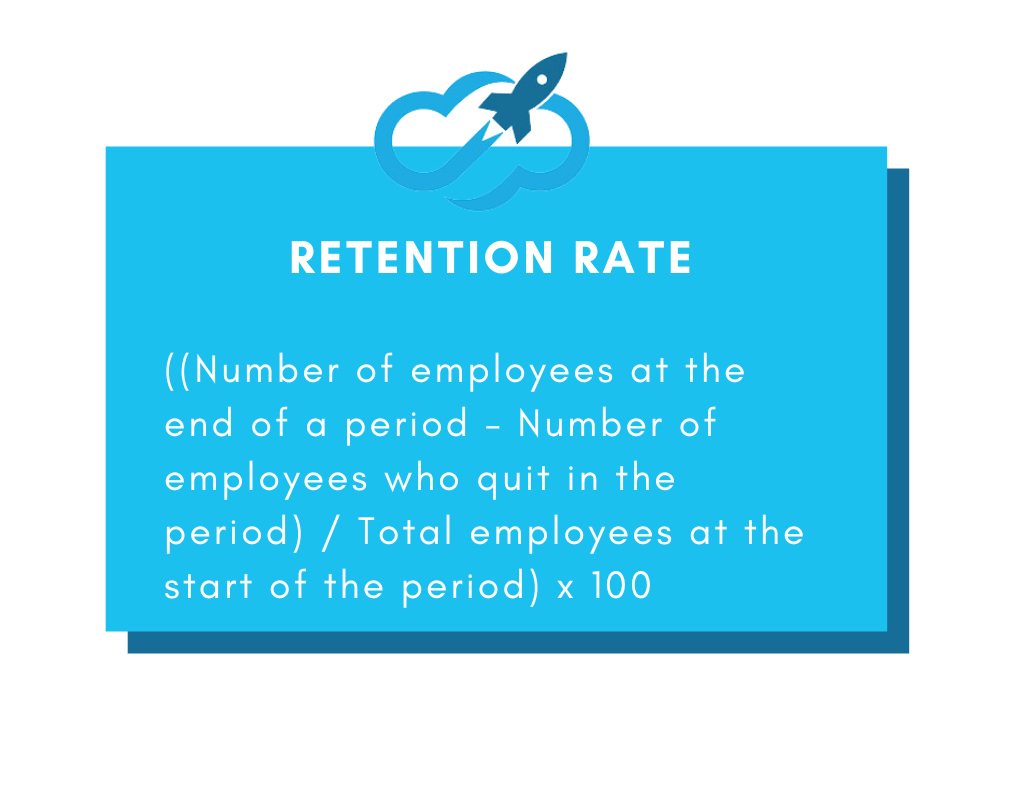
KPI #9: Applicant Tracking System (ATS) Efficiency
Measuring Applicant Tracking System (ATS) efficiency helps you understand if it aligns with your company’s recruitment goals.
An ATS has several functions under its belt. For example, it can facilitate job posting, candidate tracking, interview scheduling, and reporting.
So the ATS Efficiency KPI is a sum of all these capabilities that must be regularly tracked and analyzed to pinpoint improvement areas and optimize recruitment processes.
Some of the ATS capabilities you must measure to gauge its efficacy:
- Measure time-related metrics, such as time-to-hire and time-to-source to understand if your ATS reduces the time taken to source suitable candidates.
- Achieving a higher conversion rate using an ATS indicates candidates seamlessly move through each stage of the hiring process.
- Assess your ATS’s reporting capabilities for accuracy and valuable insights.
- Is your ATS budget-friendly? Measuring cost-per-hire and ATS fees can help you understand if your ATS is worth the investment and ROI.
- How are the quality of hires fetched using your ATS? High quality indicates your ATS was successful at bringing in quality talent.
KPI #10: Time-to-Productivity (TTP)
Time-to-productivity (TTP) is the time freshly hired employees take to get accustomed to their new positions and become fully productive delivering sufficient value to their organization.
In simple terms, just-onboarded employees taking the least amount of time to actively contribute are your all-star employees and dream recruits.
Recruiter benefits for tracking TTP:
-
Optimize onboarding processes
Are your new hires taking more time to reach the peak of their productivity? You may need to refurbish your onboarding program. For example, add training and get them in touch with experts.

-
Evaluate performance
Less TTP indicates talent acquisition success. You can use the same strategies or optimize them further by improving candidate selection criteria.
-
Avoid bad hires
Bad hires are often the least productive and most likely to leave shortly after joining your organization. So tracking current TTP lets you relook candidate screening to find hires with traits and qualifications suitable for the vacant role.
So these were the most essential KPIs for recruiters like you. Track and measure them frequently for better data-led decision-making and continuous improvement in hiring quality.
What’s next?
Listen, we understand that being a recruiter involves juggling multiple roles simultaneously. You may be screening candidates today and coordinating and organizing interviews tomorrow.
But most importantly, you’re constantly looking for ways to reach out to the right candidates and choose the best communication channel.
LinkedIn is one channel that has outdone every other recruitment platform. And Expandi is your perfect companion to automate LinkedIn candidate outreach so you can hit your target KPIs with a cost-effective, time-saving approach.
Interested to see what this looks like? Sign up for Expandi’s 7-day free trial today!
Check out more of Expandi’s recruiting resources below:
You’ve made it all the way down here, take the final step


